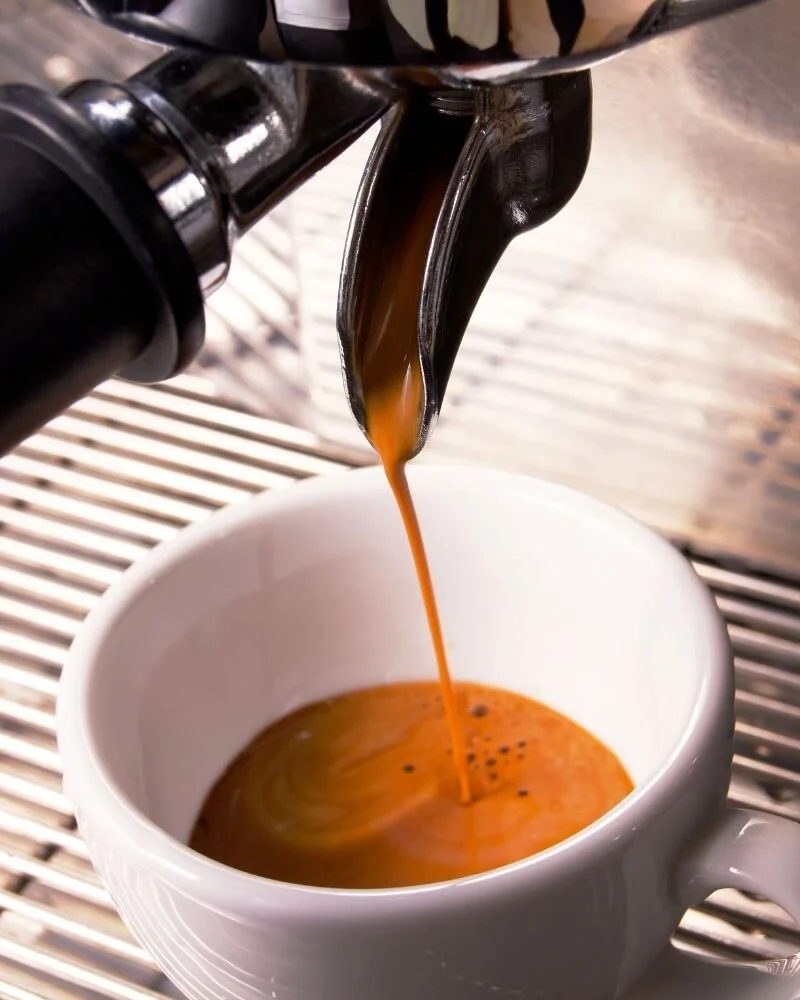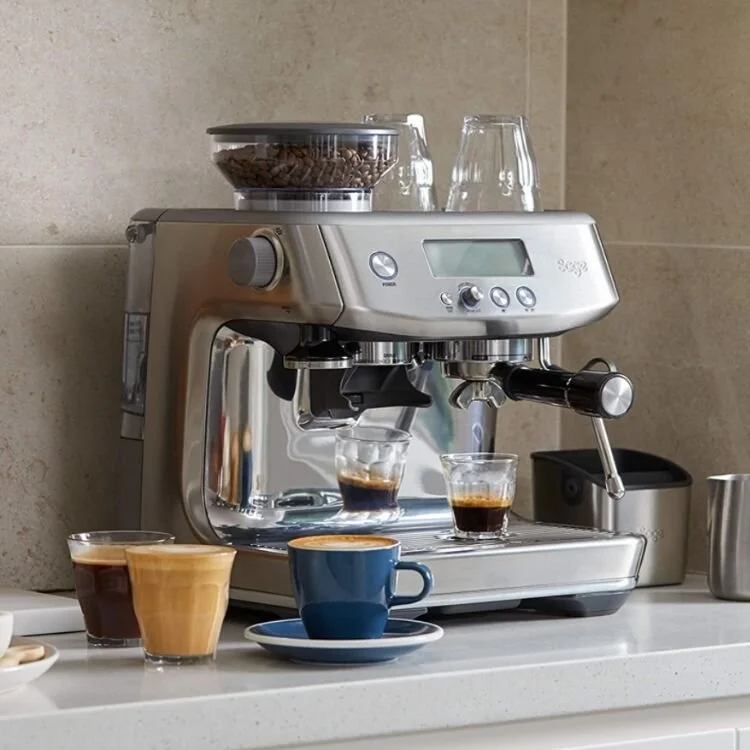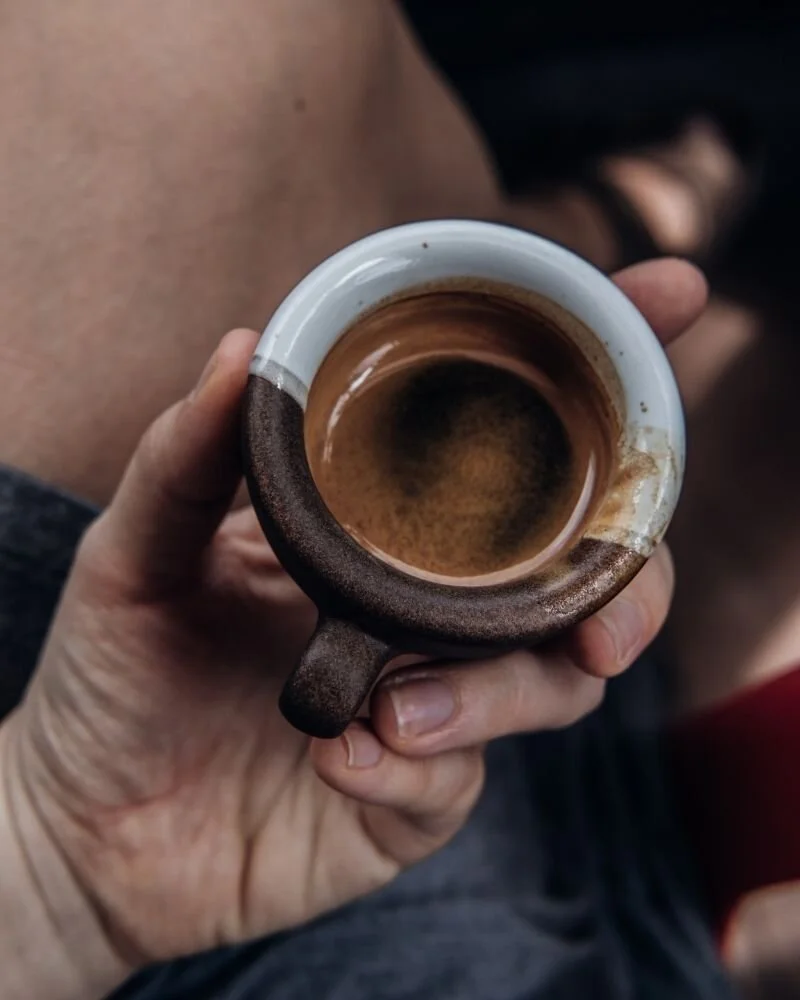How To Make Espresso At Home
Oh, the aroma of espresso, wafting in the air.
That unmistakable nutty, fruity, and herbal whiff welcomes you as soon as you enter your local cafe.
So, how would you like it if your home smells like espresso? If you are a coffee addict, then that is a resounding yes.
So, how to make espresso at home?
Is that even possible?
Yes. And there is more than one way to make a homemade espresso right in your kitchen you also don’t necessarily need a home coffee machine.
But first, let’s talk about the basics:
What Is Espresso?
You are obsessed with espresso, but you are not quite sure what exactly it is.
Espresso (ess-PRESS-oh) is coffee.
It is still the same as any other coffee bean but often prepared (processed at origin and roasted in country) specifically for use as an espresso.
Espresso is concentrated coffee which is produced by a machine that forces hot water at a high pressure through finely ground coffee beans.
It is served in small and strong shots—therefore it is stronger and thicker, with a higher amount of caffeine than normal coffee of that volume.
The difference, therefore, between espresso and regular coffee lies in the preparation: the brewing process and the grind.
Oftentimes, espresso is used as the base for a variety of coffee beverages, including Americano, cafe latte, macchiato, and cappuccino.
In short, espresso is “amplified coffee.” Thicker, creamier, more acidic— and very much addicting.
Express Espresso Facts
Here are some “express” facts on espresso!
Ingredients Of Espresso
Ground coffee beans and nearly boiling water, specifically 190 to 205 degrees Fahrenheit. That is equivalent to 90 to 96 degrees Celsius. (1)
Pressure Needed
Jeremy Berger from Gear Patrol says: Espresso is an ounce of coffee made from 7 grams of coffee beans, brewed at 9 bar of pressure, equivalent to 130 psi. (2)
Country Of Origin
It was the Italians that invented this coffee-brewing method in 1884. (3)
This way of making coffee has become common in many countries in Europe, such as Spain, Southern France, Portugal, Switzerland, and Bulgaria.
Caffeine Content
It has more caffeine content per volume compared to regular coffee.
Find out which coffee beans our team of industry professionals loved the most.
However, due to its small serving size, or what you call “shots,” the total caffeine content is less compared to a mug of a regular brewed coffee.
Etymology
Espresso is derived from the word “expressing,” or squeezing or pressing the flavor from the coffee.
It also means “speed” or “express,” because it is done fast. Lastly, it also means “expressly for you.” (4)
The Best Coffee Beans For Espresso?
Choosing the right beans for your home espresso can seem daunting, but understanding a few key principles will help you make informed decisions.
Understanding Roast Levels
For those new to home espresso making, dark roasts offer an excellent starting point. These beans typically deliver consistent results with rich chocolatey and caramel notes, making them particularly forgiving when you're learning to dial in your shots. They're brilliant for milk-based drinks and produce that classic espresso flavour most associate with high street coffee shops.
As you gain confidence, consider exploring medium-dark roasts, which offer a more nuanced flavour profile. These beans strike a beautiful balance between subtle fruit notes and chocolate undertones whilst still maintaining excellent crema production. Medium roasts, though trickier to work with, reveal more complex flavours and highlight the unique characteristics of their origin, making them ideal for straight espresso once you've mastered your technique.
Blends versus Single Origin
Most home baristas find espresso blends more approachable for daily use. These carefully crafted combinations typically feature two to four origins, designed specifically for stability and consistent crema production. A good blend delivers reliable results day after day, making your morning coffee routine more predictable and enjoyable.
Single origin beans, whilst more challenging to work with, offer an exciting opportunity to explore distinct flavour profiles. These beans showcase the unique characteristics of their growing region but require more skill to extract properly. They're brilliant for coffee enthusiasts who enjoy experimenting with different taste profiles and don't mind spending time adjusting their technique for each new bean.
Proper Storage and Freshness
Storing your beans correctly is crucial for maintaining their flavour. Keep them in an airtight container at room temperature (18-24°C), away from direct sunlight and moisture. Contrary to popular belief, storing beans in the fridge or freezer can actually harm their flavour due to moisture condensation.
The sweet spot for espresso beans typically falls between 7-21 days after roasting, with peak crema production around the 10-14 day mark. While beans remain acceptable for use up to 30 days post-roast, you'll achieve the best results by using them within this optimal window. Consider buying smaller quantities more frequently rather than bulk purchasing to ensure you're always brewing with fresh beans.
Choosing Quality Beans
When selecting beans, look for those with a predominantly Arabica content (at least 80%). Some blends include a small percentage of Robusta (up to 20%) for extra crema and body, but avoid pure Robusta blends as they typically produce a harsher, more bitter espresso. The processing method also influences flavour - washed beans offer cleaner, brighter flavours, whilst natural processing results in fuller-bodied, fruitier notes.
Classic combinations like Brazilian and Colombian beans create a wonderfully balanced espresso with pronounced chocolate notes. For more adventurous palates, try Ethiopian and Guatemalan combinations, which offer complex, fruit-forward profiles. Indonesian and Brazilian blends deliver a full-bodied cup with earthy undertones that many British coffee drinkers particularly enjoy.
Do I Need Espresso Beans To Make Espresso?
Although espresso beans are roasted and designed for use in an espresso machine to make espresso coffee you don’t need espresso beans to make espresso.
For example many single origin coffees that you will find at your local coffee roasters will taste delicious when extracted as an espresso although they have been roasted for various other brew methods too.
Can You Make Espresso Without A Machine?
Yes, you can whip up a rich and authentic-tasting espresso at home.
However, you cannot make a “true” espresso without an espresso machine. But it’s super close enough.
Also, it’s a convenient way when you find yourself awake at an ungodly hour and you crave for an espresso.
All you have to do is head down to your own kitchen.
But how to make espresso at home without a machine?
There are four ways to make espresso right in your kitchen without the use of a fancy, expensive machine. They are the following:
Moka Pot / Stovetop
AeroPress
French Press
Instant Coffee
4 Different Ways To Make Espresso At Home?
Plenty of coffee lovers are now learning how to make espresso drinks at home, and you can choose any of the five methods.
Without an espresso machine, however, you are merely recreating the espresso experience.
Moka Pot / Stovepot Method
The Moka pot is perhaps the most popular method in making espresso at home.
This cute little kettle creates an espresso-like beverage.
Fix yourself a cup of soul-satisfying coffee beverage and get a whiff of real espresso before you take that addicting sip.
A moka pot is an electric or stovetop coffee-maker invented in 1933 by Italian engineer Alfonso Bialetti.
(6) This iconic kettle has become a household item in Europe and Latin America and is usually made of aluminium.
Making espresso in a moka pot is as easy as 1-2-3.
Supplies To Prepare:
A Moka pot
Your preferred coffee beans
Scale (option is tablespoon)
Coffee grinder
Method:
Step 1: Get your favorite coffee beans. Measure out about 20 to 22 grams (equivalent to 2 tablespoons).
Step 2: Get your grinder and grind your 2 tablespoons of coffee beans as finely as possible.
Step 3: Get your moka pot and pour 3.5 ounces of distilled or purified water into the boiler, or the bottom part of the pot.
The water must reach the valve— never higher.
Step 4: Get your finely ground coffee beans and pour into the pot’s built-in filter.
Shake until the coffee becomes settled.
Step 5: Secure the top part of the pot (the kettle itself) tightly.
Step 6: Place the pot on a burnet. Set it to medium heat.
Step 7: Sit back and relax and wait.
Step 8: When the coffee begins to foam on the surface of the pot, turn off the heat.
Step 9: Now you have your concentrated coffee, or espresso. Pour into your espresso cup and sip with joy.
AeroPress Method
Similar to the espresso machine at your favorite coffee shop, the AeroPress depends on pressure to force the optimum flavour from your chosen coffee beans.
Used by artisan roasters, this cylindrical contraption comes with a plunger and a filter.
The only difference with this device is that it is affordable, lightweight, and does not need electricity.
This means you can take it to your friend’s house for a tete-a-tete over an aromatic espresso.
Mastering the AeroPress will make you look like a seasoned barista!
Supplies To Prepare:
AeroPress (preferably with two filters)
Your favorite coffee beans
Cold water
Coffee grinder
Pre-warmed mug
Scale (option: tablespoon)
Method:
Step 1: Place the two filters inside the drain cap of your AeroPress.
Step 2: Gently rinse the filters.
Place the drain cap and filter inside the press compartment.
Step 3: Put the press on a mug or cup, your choice.
Step 4: Get your favorite coffee beans. Measure out about 23 grams (equivalent to about 2 tablespoons).
Step 5: Get your grinder and grind your 2 tablespoons of coffee beans as finely as possible— preferably as fine as your table salt.
Step 6: Pour about 3.5 ounces of cold water. Heat to 200 degrees.
Step 7: Stir the coffee.
Step 8: Press down hard on the plunger. Again, hard, because espresso is all about pressure!
Step 9: Pour into your pre-warmed espresso cup and weep with joy.
French Press Method
This is the least desirable method, but if you only have French Press at home, you can still create an espresso-like beverage.
Despite the less-than-perfect espresso result, there are coffee lovers around the world that are still quite satisfied with the French Press method.
This press is found almost anywhere and is affordable. So, why not?
Supplies To Prepare:
French Press
Your favourite coffee beans
Scale (option: tablespoon)
Method:
Step 1: Get the best Aeropress coffee beans.
To achieve the same frothy crema produced by both the moka pot and the AeroPress, you have to add a lot of freshly and finely ground coffee.
Step 2: Measure 1 cup of water.
Step 3: Pour 1 cup of water into the kettle.
Step 4: Heat the kettle to just below 200 degrees.
Step 5: While the water is being heated, add the coffee grounds to the French Press contraption.
Step 6: When the water is finally heated, add a splash of it onto the coffee grounds to soak them for half a minute.
This process will allow your coffee beans’ rich and flavorful notes to escape.
Step 7: Pour the rest of the hot water over the coffee grounds. Secure the lid.
Step 8: Allow the coffee grounds to steep for approximately 4 minutes.
Step 9: Press the plunger down— but halfway only. The pressure that you make should be slow and steady.
Instant Coffee Method
If you’ve been wondering how to make espresso shots at home using instant coffee, then you came to the right place.
This is the most inexpensive method in recreating that special “espresso feels.” Remember, espresso is strong, concentrated coffee.
And if you only have instant coffee in the kitchen (especially the dark-roasted kind), then you rejoice! You can create a cup of espresso!
Supplies To Prepare:
Instant coffee
Kettle
Water
Teaspoon
Tablespoon
The Instant Coffee Method
Step 1: Get a cup of water. Pour into the kettle.
Step 2: Heat water until it boils. Once the water has boiled, turn off the heat.
Step 3: Get your favorite coffee cup and pour 1 teaspoon of instant coffee into it.
Step 4: Pour 3 tablespoons of hot water into the cup. Stir well for 1 minute.
Step 5: Once the instant coffee dissolves, you will see how the liquid has smoothened into a silky beverage.
Step 6: Drink with pleasure. Or, you can pour it into your cafe latte or cappuccino!
Can I make espresso with regular coffee?
It kind of depends on what you class as regular coffee.
Espresso is extracted from finely ground coffee beans that are subjected to 9 bars of pressure for around 30 seconds.
If you are referring to regular coffee as any coffee beans then yes you can make an espresso, as long as you grind the coffee fine and extract the coffee correctly.
If you are referring to instant coffee then you can create a short coffee that resembles espresso but you will struggle to reach the depth and body of espresso.
Is it cheaper to make your own espresso?
If you have your own espresso machine it generally is cheaper to make your own espresso.
However, be aware that it takes a lot of skill and training to become a barista and the espresso machines used in cafes are usually extremely expensive so it’s always worth pointing out that you may never reach the quality of espresso you purchase in your local specialty coffee shop.

















